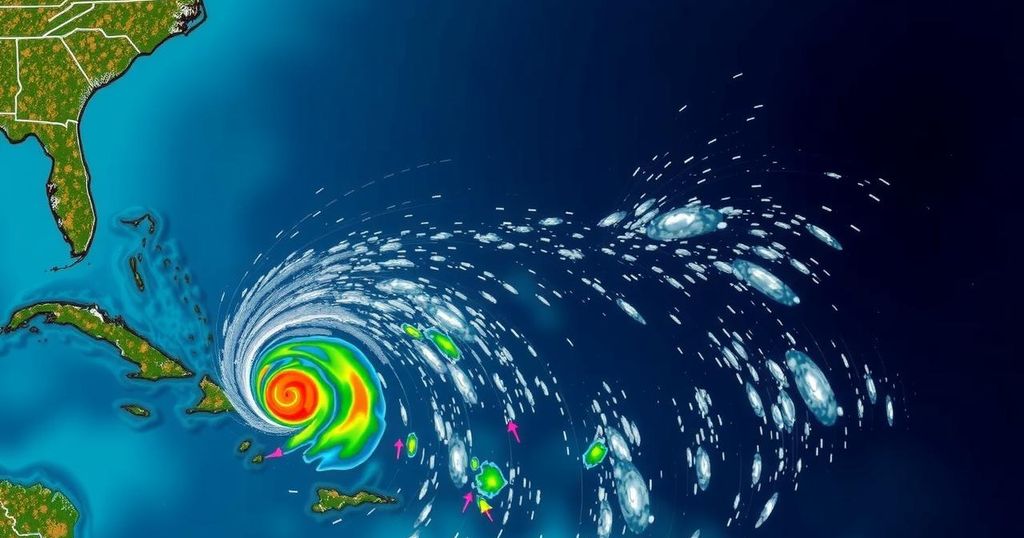Summary of the 2024 Atlantic Hurricane Season and Its Impact

The 2024 Atlantic hurricane season concluded with 18 named storms, including 11 hurricanes and 5 major hurricanes. Following a mid-season lull, 12 named storms developed after the typical peak, resulting in disastrous impacts including flooding and fatalities. NOAA highlighted significant advancements in predictive models this season, enabling more accurate forecasts and responses.
The 2024 Atlantic hurricane season, which concludes on November 30, demonstrated notable activity, with 18 named storms occurring, including 11 hurricanes and five classified as major hurricanes. Significantly, this year witnessed a recovery from a lull in storm formation during the typical peak season, with twelve named storms developing post-September’s climatological peak. Five hurricanes impacted the continental U.S., highlighting the severity and unpredictability of the season.
This hurricane season’s data aligns with predictions by NOAA’s Climate Prediction Center, which anticipated an average of 14 named storms per season, alongside 7 hurricanes and 3 major hurricanes. NOAA Administrator, Dr. Rick Spinrad, emphasized the increasing need for NOAA’s scientific services to aid communities and emergency responders amid increasingly destructive tropical cyclones. Moreover, modern forecasting improvements have yielded the most accurate predictions in NHC’s history, marking a significant advancement in hurricane analysis and response capabilities during this active season.
The Atlantic hurricane season typically runs from June 1 to November 30, with activity peaking from mid-August to late October. This year’s season was especially dynamic, characterized by an abnormally high number of storms, particularly a resurgence after a mid-season lull. Understanding the patterns and data surrounding this year’s hurricanes remains vital as climate change factors continue to influence storm intensity and frequency, necessitating robust forecasting and response strategies.
The 2024 Atlantic hurricane season was marked by above-average activity, confirming warnings and forecasts from NOAA. The emergence of major hurricanes, such as Helene and Milton, demonstrated both the destructive capacity of these storms and the efficacy of improved forecasting methods. As the season concludes, ongoing research and data collection will remain imperative for enhancing the preparedness and resilience of affected communities in future hurricane seasons.
Original Source: www.noaa.gov







